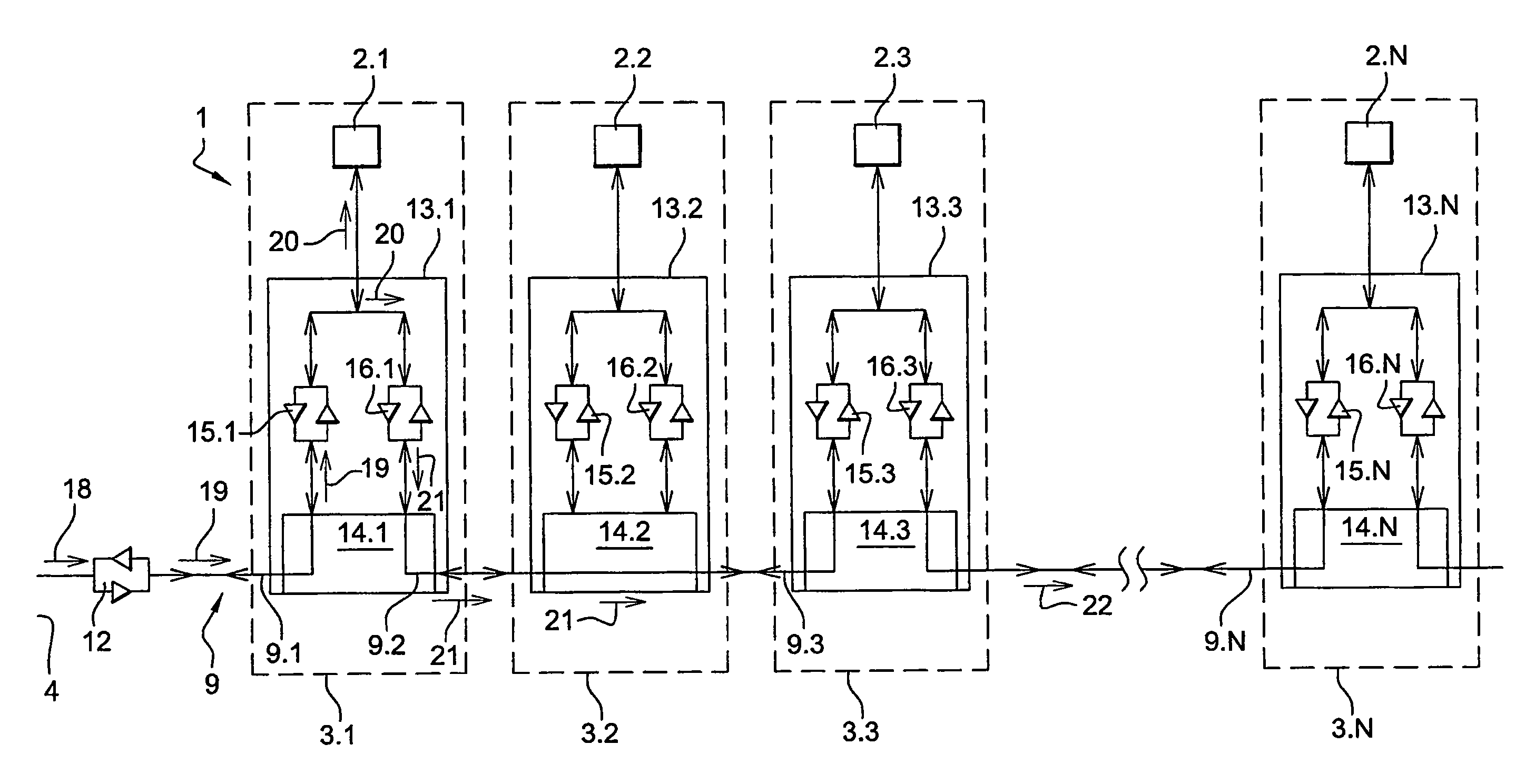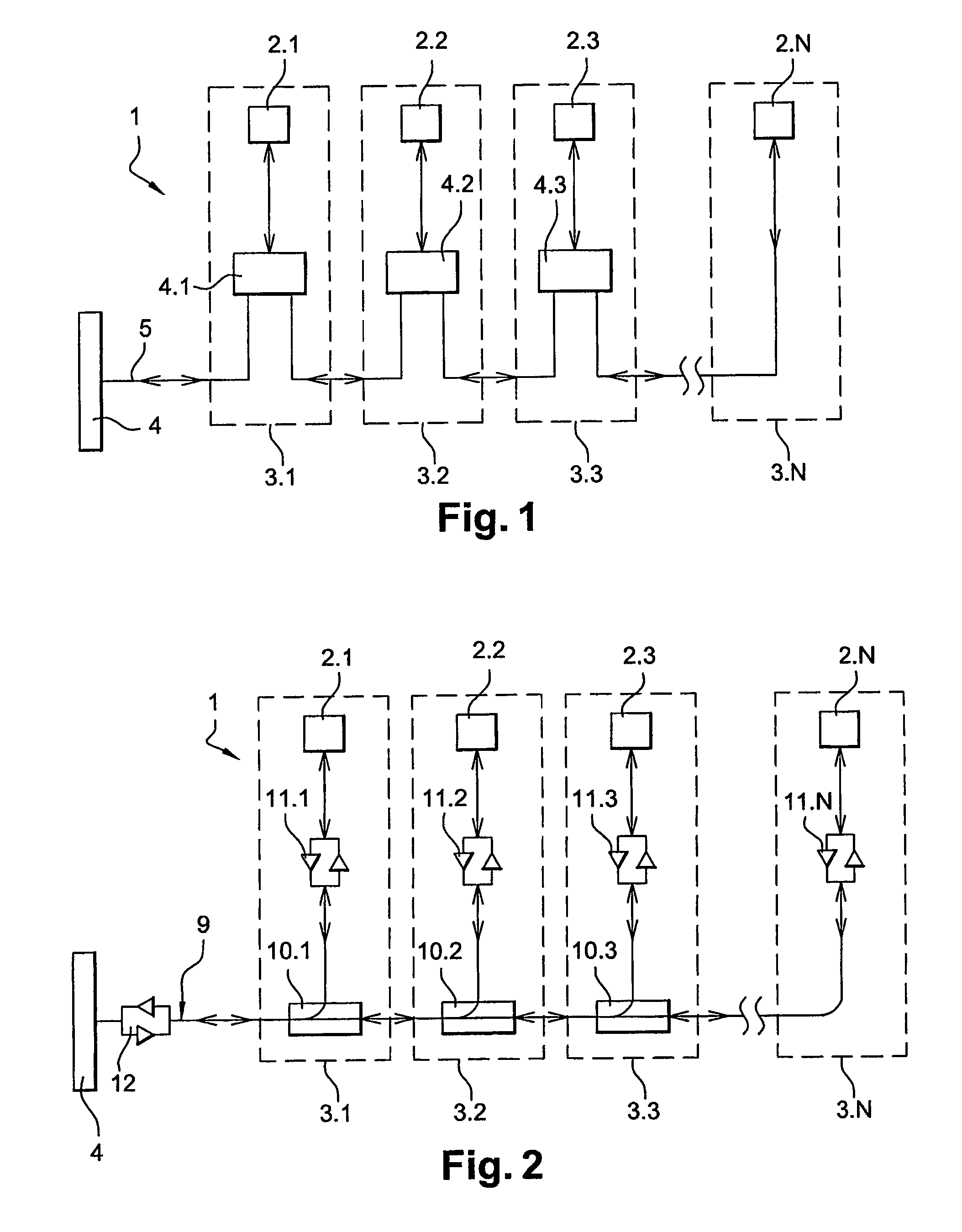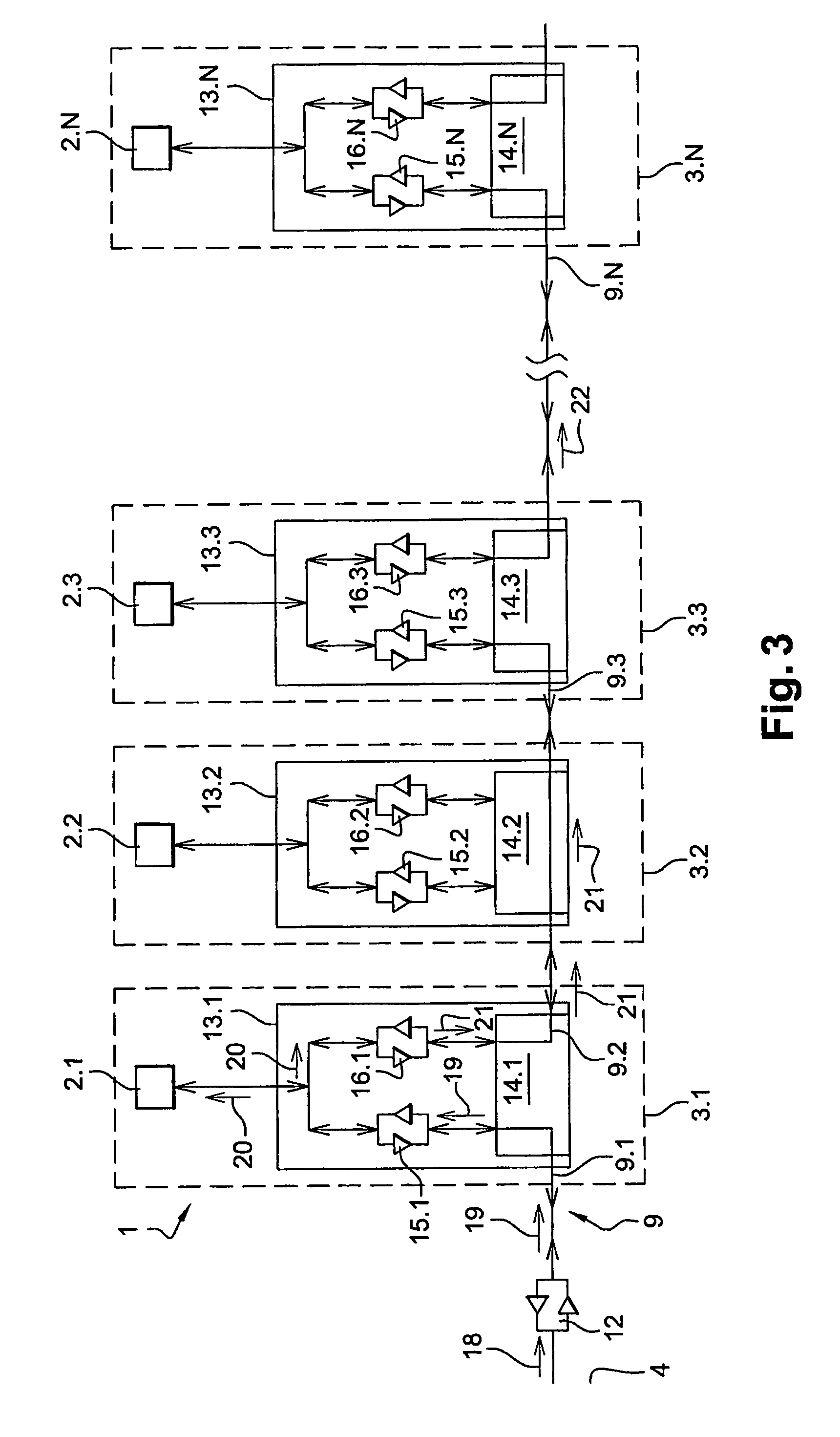Switched optical fibre network for airplane seats
a technology of optical fiber network and seat, which is applied in the direction of fiber transmission, bidirectional transmission, transmission, etc., can solve the problems of heavy network type, difficult connection to connector, and risk of corrosion,
- Summary
- Abstract
- Description
- Claims
- Application Information
AI Technical Summary
Benefits of technology
Problems solved by technology
Method used
Image
Examples
Embodiment Construction
[0039]Identical components retain the same reference from one figure to the next.
[0040]FIG. 3 shows a switched optical fiber network 1 for airplane seats 3.1-3.N. This network 1 comprises screens 2.1-2.N connected to each other and to a server 4 via an optical fiber 9. These screens 2.1-2.N each comprise a computer (not shown) provided with a network card which enables them to exchange data on an Ethernet type network.
[0041]These screens 2.1-2.N are connected to the optical fiber 9 via switching boxes 13.1-13.N connected in series to each other. Each switching box 13.1-13.N comprises an optical switch 14.1-14.N and two transceivers 15.1-15.N and 16.1-16.N (transceivers in English) connected, on the one hand, to the optical switch 14.1-14.N and, on the other hand, to the screen 2.1-2.N. The server 4 is also provided with a transceiver 12 connected, on the one hand, to this server 4 and, on the other hand, to the optical fiber.
[0042]The transceivers 12 and 15.1-15.N convert the electr...
PUM
 Login to View More
Login to View More Abstract
Description
Claims
Application Information
 Login to View More
Login to View More - R&D Engineer
- R&D Manager
- IP Professional
- Industry Leading Data Capabilities
- Powerful AI technology
- Patent DNA Extraction
Browse by: Latest US Patents, China's latest patents, Technical Efficacy Thesaurus, Application Domain, Technology Topic, Popular Technical Reports.
© 2024 PatSnap. All rights reserved.Legal|Privacy policy|Modern Slavery Act Transparency Statement|Sitemap|About US| Contact US: help@patsnap.com










